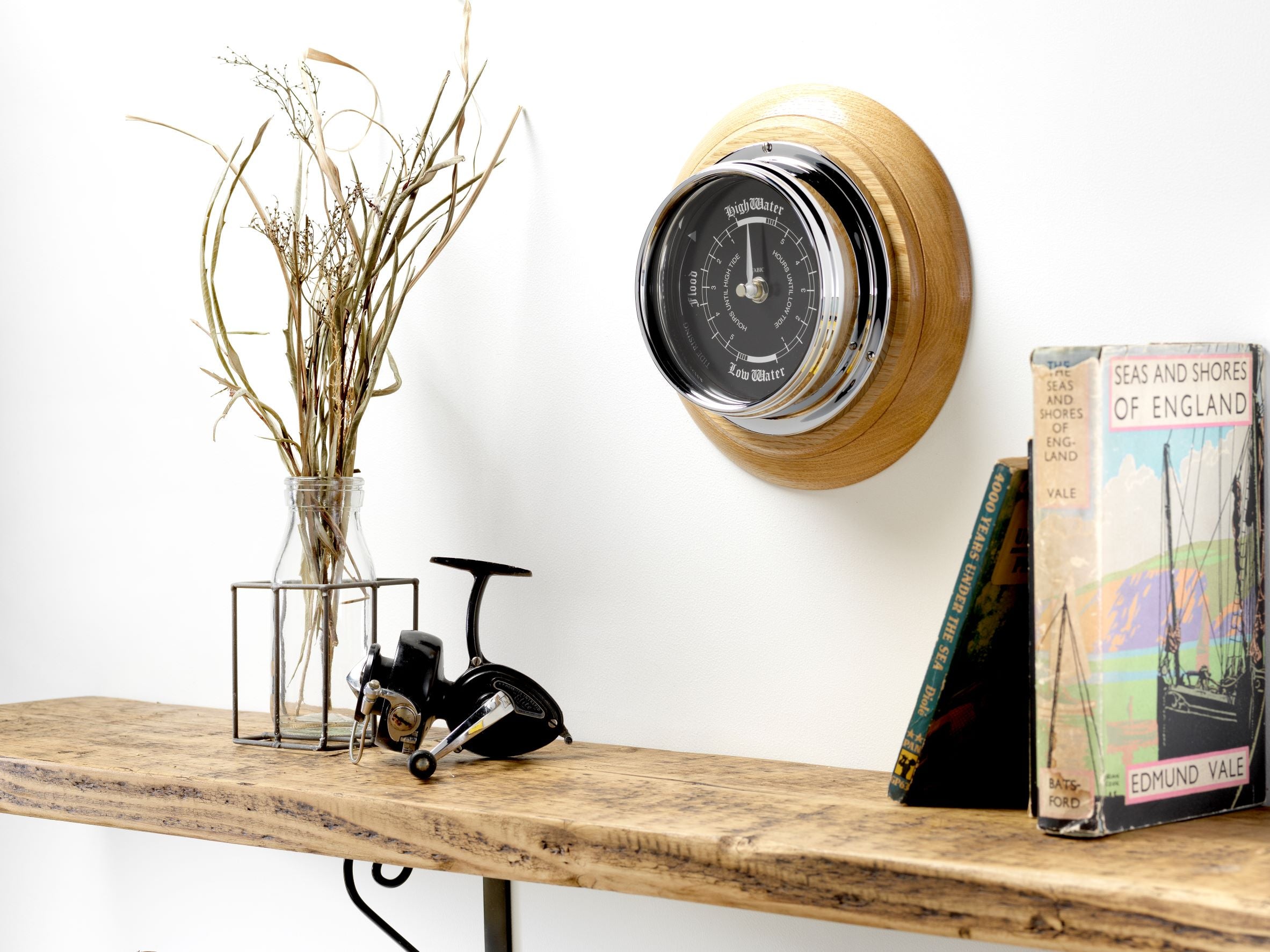
Cracking The Code: How Do Tide Clocks Work
Centuries ago, a brilliant method was devised to measure tides using intricate calculations based on lunar days. But what exactly is a lunar day? Simply put, it's the time it takes for the Moon to complete a full orbit around the Earth, precisely 24 hours and 50 minutes.
In this blog, we will unveil everything you need to know about the working of a tide clock.
How Do Tides Occur?
Lunar days are crucial because they play a significant role in the formation of tides. The gravitational forces between the Moon and Earth create powerful tides, resulting in two high tides and two low tides during a lunar day, each occurring approximately every 12 hours and 25 minutes.
For a lunar month of 29 days, tide clocks provide a relatively accurate assessment of the state of the tide. However, since the average time between two high tides or low tides is 12 hours and 25 minutes, there might be slight variations in the tide clock's accuracy. Dzw a

The Importance of Tides: Why Should You Care?
Understanding how tides work and being aware of tide changes can be highly beneficial for many people and professions.
- For fishermen, both commercial and recreational, tides and tidal currents are vital knowledge for optimizing their chances of catching big fish.
- Recreational boaters can avoid getting stuck in shallow water during low tide by being aware of the tide's movements.
- Swimmers, paddleboarders, surfers, and kayakers can plan water adventures accordingly. Strong tidal currents and waves can pose risks such as rip currents and powerful undertows.
Decoding Tide Clocks: How Do They Work?
Unlike traditional clocks that measure time, tide clocks indicate the ebb and flow of tides. They are a valuable tool for determining whether the tide is rising or falling at your favourite beach or boating spot.
Tide clocks don't follow the typical 24-hour cycle. Instead, they operate on a unique pattern of 12 hours and 25 minutes, which represents the average duration between two high tides or low tides in areas with regular tides, like the Atlantic coast of North America. Once you set your tide indicator, you can simply observe the position of the clock hand to determine the current state of the tide.
Can I Trust Tide Clocks?
Tide clocks are indeed reliable. For the most accurate results, it is recommended to set your tide clock during high tide on the day of a full moon. It reduces the margin of error throughout the month.
Typically, the discrepancy will be less than 30 minutes, with only a few days in a month showing a difference of up to one hour.
How To Set Your Tide Clock: A Step-by-Step Guide
If you own Handmade Prestige Brass Tide Clock, Set your clock on either a New or Full Moon using the local tide information in your local paper or from the internet
Here's how to do it:
- Determine the time of high tide for the current day.
- Set your tide clock to match the high tide, ensuring that the clock hand points directly upward. Insert a size ‘AA’ battery to power the tide clock.
- On the day of the next full moon, double-check the accuracy of the high tide time and make adjustments if necessary. Remember not to account for daylight saving time changes.
Decoding Tide Clocks: How to Read Them
Reading a tide clock is as simple as reading a regular clock.
- Starting from the high tide position at twelve o'clock, follow the clockwise movement.
- The tide clock visually represents the receding tide until it reaches low tide, which corresponds to the six o'clock position.
- The clockwise movement continues, indicating the rising tide from the six o'clock position back to twelve o'clock, symbolizing high tide.
- The numerical indicators from 5 to 1 indicate the hours remaining until the next tide.
Where Can You Use Tide Clocks?
Tide clocks can be used in various locations, but their practicality may vary depending on the region. Earth's major shorelines exhibit three primary tidal patterns: semidiurnal, mixed semidiurnal, and diurnal. Tide clocks are most effective in semidiurnal tidal areas, which experience two high tides and two low tides of similar size every lunar day.





